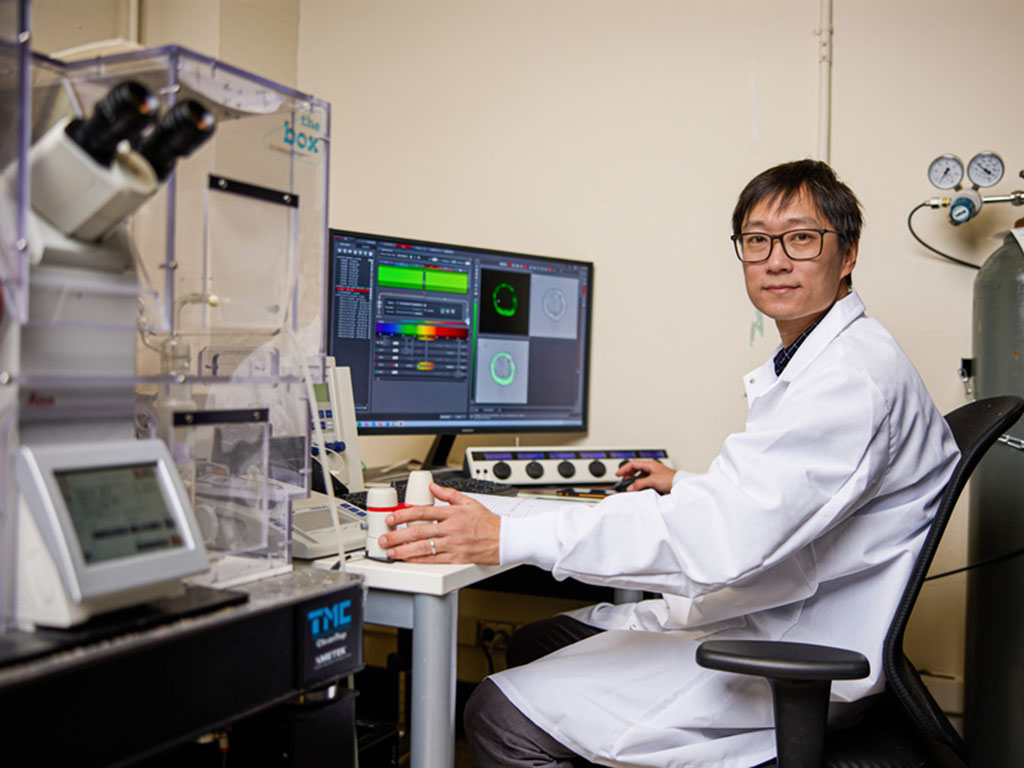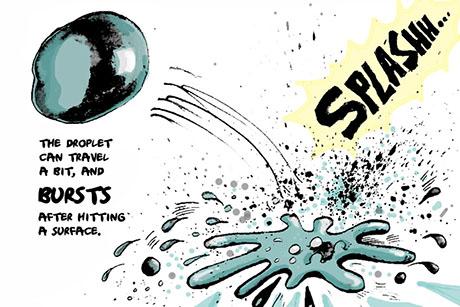How cell mechanics influences everything
High in the treetops of a Chinese rainforest, Ming Guo began to explore the influence of a single cell.
A student in China’s Tsinghua University, Guo was studying the mechanical properties of plant cells. As part of his master’s thesis he took on an intriguing question: Does a cell’s physical integrity — its size, shape, squishiness, or stiffness — have anything to do with how tall a tree grows?
In search of an answer, Guo visited forests across the Yunnan province, collecting leaves from the tallest trees, some towering over 200 feet — too high for Guo himself to climb. So, he enlisted the help of a student in the university’s rock climbing club, who scaled the trees and retrieved leaves at various heights along their length.
After analyzing the individual plant cells within each leaf, Guo observed a pattern: The higher the leaves, the smaller the cells. And, more interesting still, the size of a single cell could more or less predict how tall a tree can grow.
This early work in tree cells made one thing clear in Guo’s mind: A cell’s physical form can play a role in the development of an entire organism. This realization motivated him to study cell mechanics, in plant and eventually animal cells, to see what more a cell’s physical properties can reveal about how cells, tissues, organs, and whole organisms grow.
“People study cells in the context of their biology and biochemistry, but cells are also simply physical objects you can touch and feel,” Guo says. “Just like when we construct a house, we use different materials to have different properties. A similar rule must apply to cells when forming tissues and organs. But really, not much is known about this process.”
His work in cell mechanics led him to MIT, where he recently received tenure and is the Class of ’54 Career Development Associate Professor in the Department of Mechanical Engineering.
At MIT, Guo and his students are developing tools to carefully poke and prod cells, and observe how their physical form influences the growth of a tissue, organism, or disease such as cancer. His research bridges multiple fields, including cell biology, physics, and mechanical engineering, and he is working to apply the insights from cell mechanics to engineer materials for biomedical applications, such as therapies to halt the growth and spread of diseased and cancerous cells.
“MIT is a perfect place for that in the long run,” Guo says. “It’s cross-disciplinary and always very inspiring, and by interacting with different people outside of the field, you get more ideas. It’s more likely that you can dig up something useful.”
The nature of physical objects
Guo grew up in Shijiazhuang, a city that is a two-hour train ride from Beijing. Both his parents were engineers — his father worked at the local factory, and his mother built teaching models of traffic systems at a vocational school. His parents worked hard, and like most factory families, they did not have the luxury of looking after their child when school was out.
“In the summers, they had to go to work, and they would just lock me at home. I’d throw my keys outside to someone to unlock the door so I could go play with them,” Guo recalls.
He and his friends would head to a cluster of residential buildings near the factory, and spent their days climbing.
“I liked to climb short buildings and towers and look at how they were structured,” Guo recalls. “There was also a small river where we tried to catch fish. Most families didn’t have much savings at the end of the year and didn’t spend much effort on education. But I remember as a kid having a lot of fun.”
School, and science, came more into focus in high school, when Guo had the chance to visit a cousin who was attending Tsinghua University. He remembers being particularly drawn to a textbook on his cousin’s shelf, on the structural mechanics of bridges. The short stay inspired him to apply to the university — one of the top two schools in the country. Once accepted, he headed to Tsinghua for a degree in mechanics.
After a brief foray into the mechanics of fluids, and a project involving simulations of an artificial blood pump, Guo decided to pivot, and focus instead on the mechanics of cells, plant cells in particular. Inspired by his advisor, he took up the topic of how a plant cell’s mechanical integrity influences how tall a tree can grow. The project grew into a master’s thesis as Guo stayed on at Tsinghua as a master’s student.
“As I worked on plants, I realized that animal cells were also very interesting,” Guo says. “The nature of different materials, especially biological materials, and how to understand them simply as physical objects, was fascinating to me.”
“A profound impact”
As he wrapped up his work with tree cells, Guo read up on animal cell research, gravitating to work by David Weitz, a Harvard University physicist who specializes in soft matter, including the mechanical properties of living cells. Weitz’s work motivated Guo to apply to Harvard’s graduate program in applied physics.
In 2007, he arrived on the Cambridge campus — the first time he’d ever ventured outside China — and felt lost amid a new and foreign landscape.
“I had filled half my suitcase with ramen, and the first week I just ate ramen because I didn’t know where to eat,” Guo recalls. “I also couldn’t understand anything in some of my classes, because the type of English I learned in China was not the way people actually talk here.”
After time, Guo found his footing and dove into work in Weitz’s lab, where he focused his PhD thesis on understanding the “nonequilibrium behavior,” or the physical motions in a single cell, and investigating where the energy to generate such motions originates.
“That work really shifted my direction,” Guo says. “I knew what I wanted to do: keep understanding how cell mechanics — in multicellular systems like organs and tissues — influence everything.”
In 2015, he made the move to MIT, where he accepted a junior faculty position in the Department of Mechanical Engineering. At the Institute, he has shaped his research goals around developing new tools and techniques to better study living cells and how their physical and mechanical properties influence how cells move, respond, deform, and function.
“In the last few years, we’ve made some big insights on how, if you change a cell’s mechanical environment, such as their stiffness or their water content, that has a major impact on some fundamental biochemistry, such as transcription and cell signaling, which in turn regulates multicellular growth,” Guo says. “So, cell mechanics can have a really profound impact on biology.”
In addition to his research, Guo also enjoys teaching MIT students, most recently in 2.788 (Mechanical Engineering and Design of Living Systems), a class that challenges students to apply the mechanics of cells to design novel systems and machines. In a recent class, students have been using cardiac muscle cells to pump liquid through a microfluidic chip. A previous class amplified the natural voltage inside a plant to power a small wheel.
“The most energetic and happy moments I have are in talking to students,” Guo says. “They often give me surprises or new ideas that I love and most look forward to.”
In recent years, Guo’s research and teaching have expanded to consider not just the mechanics of single cells, but also multicellular systems — a shift he credits with the arrival of his daughter.
“She was born in 2016, and at that time, my entire group was working on single cells,” Guo says. “But seeing how she’s developed, I feel that understanding something that complex is much more interesting. So, we have also started working on exploring the mechanics and mechanobiology of more complex systems such as tissues and embryos.”



